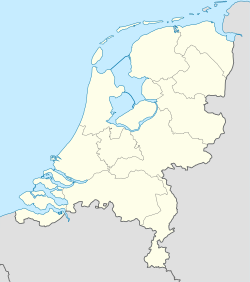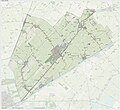Top Qs
Timeline
Chat
Perspective
Ten Boer
Place in Groningen, Netherlands From Wikipedia, the free encyclopedia
Remove ads
Ten Boer (Dutch pronunciation: [tɛmˈbuːr] ⓘ) is a village and a former municipality in the northeastern Netherlands, in the province of Groningen. The municipality had a population of data missing in 2021; the village of Ten Boer has approximately 4,600 inhabitants. In 2019, it was merged into municipality of Groningen.[3]
Remove ads
History
The village was first mentioned in 1301 as "conventum de Bure", and means "near the house".[4] Ten Boer is a terp (artificial living hill) village on a grid structure.[5] In 1301, a Benedictine monastery for nuns was established in Ten Boer. In 1485, it was incorporated into the monastery of Thesinge.[6] Around 1425, the Damsterdiep, a canal from Groningen to Delfzijl, was dug and the village received its current shape.[5]
The Dutch Reformed church is the former monastery church, and dates from the 13th century. The church was modified in 1565. The tower was demolished around 1800, and in 1810, a ridge turret was placed on the roof instead.[5]
Ten Boer was home to 279 people in 1840.[3] The former town hall is an L-shaped building with tower from 1911. It was influenced by Berlage and Jugendstil.[5] Ten Boer was an independent municipality until 2019 when it was merged into Groningen.[3]
Remove ads
Former population centres
Garmerwolde, Lellens, Sint Annen, Ten Boer, Ten Post, Thesinge, Winneweer, Wittewierum and Woltersum.
Notable people from Ten Boer
- Dirk van der Borg (born 1955), mayor of Graafstroom and Molenwaard
- Paul Drewes (born 1982), Olympic rower
- Hendrik Nienhuis (1790-1862), jurist and parliament member
- Remco van der Schaaf (born 1979), football player
Gallery
- Dutch topographic map of the municipality of Ten Boer, June 2015
- Drawing bridge near the Wolddijk-Stadsweg
- Former town hall
- Poorhouse
References
External links
Wikiwand - on
Seamless Wikipedia browsing. On steroids.
Remove ads









